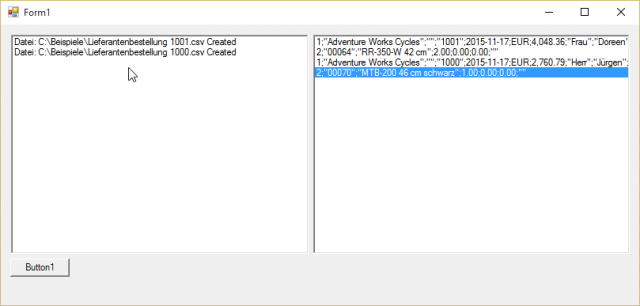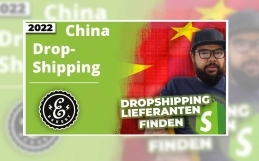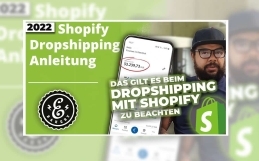The topic of dropshipping with the new Wawi is at the top of my agenda right now. The deeper meaning behind it is to automate the processes of dropshipping as far as possible, both for the dropshipper and the dropshipping supplier. In doing so, I have the complete delivery process from the order placed by the customer with the dropshipper, to the delivery to the customer by the dropshipping supplier. The purpose could be, for example, that a company establishes a subsidiary that does not have its own warehouse. This subsidiary company serves itself in the warehouse of the parent company and the parent company supplies the customer. For this scenario I already had an article and the problems I had listed. Now I’m a big step further.
My plan to map this only with the on-board means of the Wawi, I unfortunately had to carry to the grave. Unfortunately, it does not yet work as I had imagined. The workflows do not yet provide the functions needed for this. Now you could wait until this is also improved, but that would probably take too long. But before I go into detail now, let’s look at the steps in the dropshipping process.
- Customer orders via webshop, eBay or Amazon
- Order is created in the Wawi during matching
- Workflow checks if the order has more than one item and is completely dropshippable.
- Items that cannot be delivered are placed on the shopping list
- Order is delivered with the options, no partial delivery, create invoice.
- Dropshipping supplier orders are exported and transmitted to the dropshipping supplier (no matter how for now).
- Dropshipping supplier imports the orders via worker into his Wawi and delivers the orders to the stored delivery addresses. Invoices are added to the shipments. Invoice to the dropshipper is not yet created.
- All orders for a day from the dropshipper are combined at the dropshipping supplier and an invoice is created for the day.
What have I solved so far?
In order for the dropshipper to have the current stock levels of his dropshipping supplier, I have set up an automated export of the item master data including the available stock levels. Exporting and importing the variation combinations turned out to be not as trivial as described in the JTL doc. For the import at Dropshipper additional files had to be exported and after some manual work, the items were ready for the synchronization with the webshop. Here only automatic import of the article data at the dropshipper is still open, but this is the smallest task now.
In the dropshipper, the dropshipping supplier is created and the workflows are set up. All necessary files are exported cleanly. The only thing that is still open here is the format in which the supplier orders are exported at the dropshipper. To keep things flexible, I tend to use the csv format. This would also make the solution universally applicable. The automatic moving of the export files by script is then again not so problematic. The ideal here would even be a release that can be accessed by both the dropshipper and the dropshipping supplier.
The import of orders at the dropshipping supplier can only be solved by an additional tool. Here I had the question, how does the dropshipping supplier get to know that a new order exists, which then has to be written into the table tXMLBestellImport via SQL INSERT command, so that the JTL worker can process it. So a watcher is needed to monitor the release and strike when changes are made. The next step is to read the file from the dropshipper and write it to the correct XML format. This with some additional information must then be written to the tXMLBestellImport table via SQL command. Solution here is a small tool that will do the job.
What is still to be solved?
In conjunction with the WMS, or packing table, the invoices should be printed by the dropshipper at the dropshipping supplier ‘s packing table along with the shipping documents. This is the most important point that still needs to be solved. The invoice at the dropshipping supplier is issued to the dropshipper and not to the end customer, and a solution must be found here. But I’ll come up with something here too, I’m sure.
Conclusion
From a dropshipper ‘s point of view, the processes in Wawi are solved quite well. The whole thing is set up relatively quickly and straightforwardly. If you are in the role of a dropshipping supplier, things look a bit different. There are still a few imponderables to be cleared out of the way here before the process can get off the ground. Now I’ll finish writing my little watcher, converter and inserter….



















